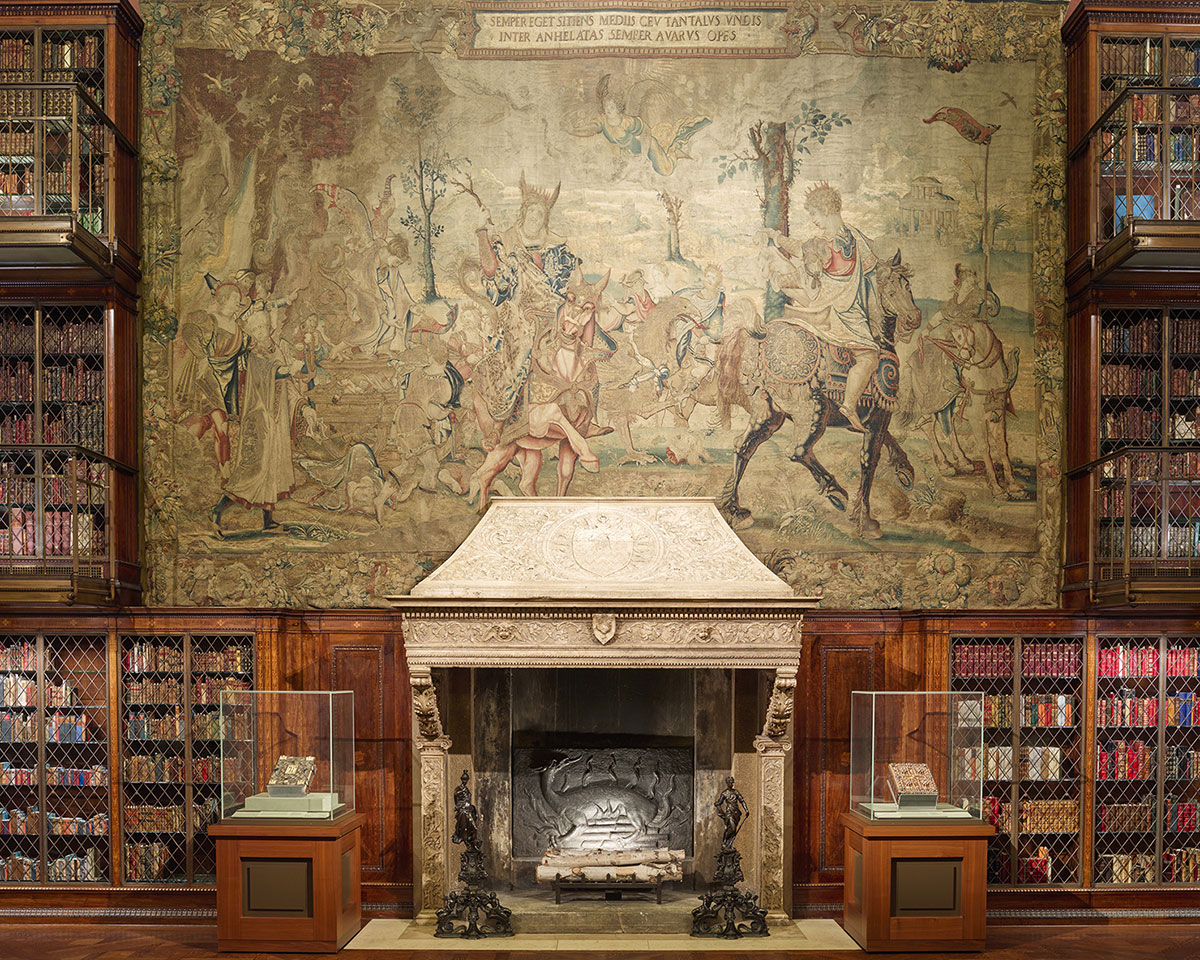
Fireplace, tapestry, and cases, with Lindau Gospels, (MS M.1) right case and MS M.651 left case, The East Room, February 2016.
After almost 120 years on view in the East Room of the Morgan’s historic library, Triumph of Avarice, the monumental tapestry that hangs above the fireplace, will be removed on August 5 and 6, 2025, and transported to the Textile Conservation Laboratory of the Cathedral of St. John the Divine, where it will undergo essential conservation work to help preserve the tapestry for years to come.
Purchased by J. Pierpont Morgan, Triumph of Avarice has hung in the East Room ever since the library's completion in 1906. The 12 by 24-foot tapestry has had some conservation work done in 1984, also by St. John the Divine’s Textile Conservation Laboratory. Since then, it has been periodically surface cleaned and small damaged areas have been repaired in situ, but it is now in need of a full restoration. The tapestry will be cleaned using both wet and dry methods, and broken and stressed areas of the wool, silk, and metallic threads will be repaired and stabilized. It will receive a new backing system as well as a new hanging system. The tapestry will be replaced with a replica until the original returns in late 2026/early 2027.
Triumph of Avarice is the only surviving tapestry of a series of seven depicting the Seven Deadly Sins. The series was designed by Pieter Coecke van Aelst (1502–1550) and woven in the Brussels workshop of Willem de Pannemaker (ca. 1510-1581). The set was purchased by Henry VIII in the mid-1530s, and the weaving likely was commissioned by him from cartoons that may have been designed by Coecke for a speculative venture funded by merchants in Antwerp.
Each panel of the original series depicted one of the Seven Deadly Sins being drawn in a triumphal chariot, represented in a highly animated composition of twisting forms and grotesque figures. In Triumph of Avarice, the winged and taloned Avarice emerges from Hell at the left in a chariot drawn by a griffin, in whose wake follow Death, Betrayal, Simony, and Larceny. King Midas rides at center, with King Croesus and the ancient Greek king Polymestor in the background, and with Pygmalion on horseback at right. Manius Curius Dentatus, an incorruptible Roman who refused wealth when it was offered to him, raises his hand in the background, while the angel of generosity presides over the entire scene. The cartouche at top bears a Latin inscription reminding the viewer, "As Tantalus is ever thirsty in the midst of water, so is the miser always desirous of riches." The intention was to use the vice of gluttony to inspire in the viewer the virtue of temperance.
